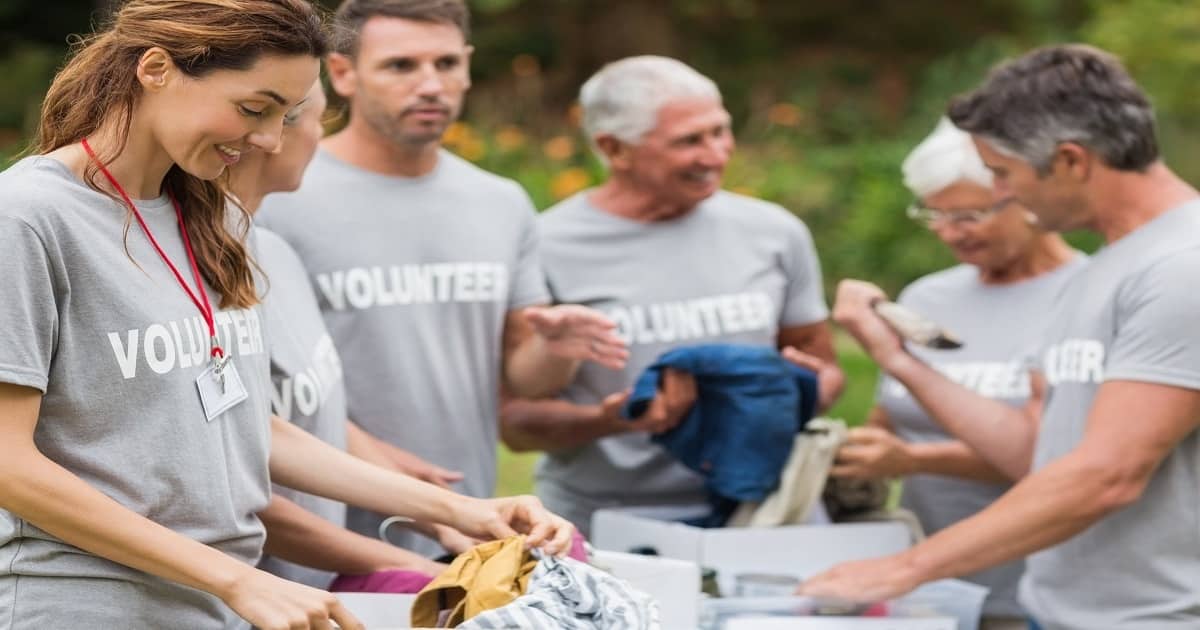
Nonprofit Management
Article | July 11, 2022
Much of the nuts and bolts of fundraising costs money, and expenses can impact your organization’s bottom line. Still, many successful nonprofits have enjoyed robust giving in recent years due to one relatively inexpensive method to exploit: social media.
We’ve become much more familiar with the various social media platforms recently; if the pandemic showed us anything, there is connective power to social media platforms. From the comfort of our homes, we can engage with people and organizations in our hometowns and far away places. If you are fundraising for a nonprofit, this connectivity is one way to attract new donors, cultivate current donors, steward your donors, and, ultimately, encourage gifts from friends new and old. Through peer-to-peer social outreach, the most impactful online connections are made, just as in “real life” fundraising.
Peer-to-peer fundraising can look a few different ways. One way is by encouraging your supporters to set up their own fundraiser pages. Some fundraising softwares make this easy by allowing a person to set up their own campaign. All of a sudden, their network becomes your network, too!
Understanding the Best Platform for your Organization
Another way of tapping into peer-to-peer power is through social media. How can social media help attract new donors? First, take an inventory of the social media accounts associated with your organization. Do you have a Facebook page? LinkedIn? Instagram? TikTok or Twitter? Find someone savvy within your nonprofit – or a friendly supporter – to help you determine if all of these (or some of them) are a good fit for your nonprofit’s personality and mission. Do you serve an adult client base? Facebook and Instagram might be good starting platforms for you. Does your organization help teenagers? Post to Instagram and TikTok. Perhaps a professional LinkedIn page is more in line with what you do. If so, make sure it is up to date and that you are interacting with other like-minded organizations!
Organizing Campaign Content for Donors
Once you have your platforms figured out, pushing organizational content that highlights your group’s work and mission will help you attract new friends and cultivate your loyal supporters. Think about posting entries that highlight the work you do in short sentences and compelling pictures, and think about posting on some kind of schedule. Perhaps you post about programming on Tuesdays and feature a client or member on a Thursday. Mindless posts are not compelling – make them relevant, interesting or clever, and tactical. Overwhelming the social media feed is not the goal – compelling content which drives social media users to your organization to learn more is.
Peer-to-peer social media fundraising often begins with peer-to-peer content sharing. Once you have a handle on the kinds of posts your organization will create – and when they’ll be pushed out – you must leverage the power of social media connections to help further your organization and its case for support. Encourage all of your staff and Board members to “friend” you on the various platforms, and encourage them to boost your content by sharing it with their networks. Do you have an event coming up? Be sure to get this out to your social media contacts and ask them to share it. Has a donor been particularly generous, and can you feature them in a social media post? If you can do so, “tagging” the donor will, in many instances, automatically push your content out to their networks. The reach becomes massive with the right connections.
Leveraging Peer Audiences
Cultivation and stewardship of your nonprofit’s loyal supporters are very easy on social media. Pictures and words of gratitude or recognition are simple to post and can demonstrate your organization’s impact far beyond the reach of any email or mailing list.
Finally, social media’s usefulness in fundraising cannot be overstated. Create virtual events that allow friends to RSVP and share them with their networks. Use Instagram to push out the publicity about the fundraiser – any promotional materials you may have or can create – to manufacture some “buzz” about the event. Utilize TikTok to showcase aspects of the fundraiser: perhaps highlight a program that the fundraiser will benefit or a behind-the-scenes of the event planning. There is no need to restrain creativity – give viewers a reason to return to your site, your event, and your nonprofit!
Read More

Fundraising
Article | July 15, 2022
Volunteers are the lifeblood of any nonprofit. Your services, fundraising campaigns, and even day-to-day operations of your nonprofit can depend on volunteers.
An estimated 30 percent of Americans or 77.9 million people reported they volunteered for an organization or association.”
AmeriCorps published survey
So, if people want to volunteer, the key to garner willing volunteers is to:
Communicate your needs
Share your “why”
Make it easy
While all nonprofits know they need volunteers, investing time and energy into building a program can naturally fall by the wayside. As you look to recruit and retain volunteers, a best practice is to put a strategic volunteer program in place.
You may be asking, “What’s the benefit to me, the nonprofit?” Let’s dive into it!
First, let’s start with the basics — what are the top reasons to invest in a volunteer program? We’ve got you covered. A dynamic volunteer program:
Creates ambassadors for your mission. Volunteers spread the word in your community and increase your community engagement. They can advocate for you with their friends, family, and local and state legislatures. Provide your volunteers with messaging so they can share their “why” on social media and by word of mouth. One pro tip shared by Points of Light is to provide a digital badge to add to your volunteer leaders’ email signatures.
Develops new funding sources. The line between a volunteer and donor should be fluid, not separate. A 2014 study by Fidelity Charitable found that 83% of volunteers report supporting the same nonprofits with their donations. Don’t silo your volunteers and your donors!
Reduces your operating costs. According to the Independent Sector, the value of a volunteer hour was estimated at $28.54 in 2020. Since payroll is often the largest expense for a nonprofit, volunteers provide essential support to your cause with minimal costs to you.
Increases the quantity and quality of your programs and services. It’s a win-win situation for professional development and your lengthy project list! That list will be met by an eager, talented volunteer, and your volunteer will improve their professional skills at the same time.
Maximizes your limited staff resources. We’re sure there’s been a few items on your wish list that you’d love to check off if you had more resources, like being open on holidays or offering more services to your community. Volunteers can fill in those gaps! Maybe they are looking for ways to give back over a holiday, or they may have the connections to develop a new service opportunity for you.
Increases your diversity and brings in new ideas. Although your nonprofit may always strive to diversify or get out of the “we’ve always done it this way” rut, you may not meet the potential of those goals with your staff. Volunteers can provide unique perspectives, different experiences, and even that spark of excitement that comes with a new idea.
Minimizes volunteer turnover.Just like staff onboarding, volunteer onboarding takes time and money. If you recruit and onboard well with easy-to-access opportunity matching, training, and tracking mechanisms in place, your volunteers will be well on their way to a successful experience. Build on that by learning more about your volunteers’ interests and skills, and they will feel seen and appreciated. An upfront investment will pay off in years of dedicated service.
Are you convinced? If so, it’s time to take the next step of how to start putting a volunteer program into place. Then you can scale your volunteering as your nonprofit grows!
Here are our 5 fundraiser-approved steps to developing a bullet-proof volunteer program.
Step 1: Quantify your current volunteer impact.
Gather data on number of volunteers, hours and skills contributed.
Measure the return on investment (ROI) including your program cost and total estimated volunteer value (# of volunteer hours x est. volunteer wage per hour). You can even take it a step further and consider the monetary savings to the community when volunteers provide the service or in-kind donation versus a private provider (e.g. number of children tutored or trees planted).
Step 2: Educate your staff and board on the benefits of volunteering.
Share your ROI and other data with your executive team and board and garner to get them on board. Recruiting, onboarding, engaging, and retaining your volunteer base will be much smoother when you have their support.
Step 3: Purchase or build a volunteer management software system.
Track volunteer hours, record your volunteers’ information, and create reports. Your software/tracking system should include a personalized volunteer dashboard where they can track their hours and volunteer services provided, demonstrating to them their impact in real-time.
Step 4: Develop a plan for recruitment, training, and growth opportunities for your volunteers.
Share the plan with your current volunteer leaders and solicit their feedback before rolling out to the community.
Step 5: Make the case for even more investment in your program next year.
Give insight into how your efforts to recruit, engage, and retain volunteers positively impact your mission and your bottom line.
Read More

Nonprofit Management
Article | July 29, 2022
Are you expecting all donors to be the same?
If you answered “no…well actually… kinda,” then you are not alone. It’s simple to send out the same fundraising message to everyone. However, you can transform your fundraising when you understand that there are many reasons why a person chooses to donate to a nonprofit. Once you understand the psychology of donating to charity, you can then best appeal to current and potential donors.
Why do Donors Give?
Along a spectrum, there are two extremes that prevent nonprofits from using donation psychology in their fundraising messages. On one end, the person making the ask – the Executive Director, Development person or Board member – assumes all donors have the same motivations for giving that they do. This translates into single-focused messaging that appeals to the person making the ask and to some donors, but not to others.
On the other end of the spectrum when a nonprofit neglects philanthropy psychology, the person making the ask becomes paralyzed. They fear offending donors by asking at the “wrong” time. They focus on external, societal crises, such as the pandemic, wars, tragedies, and make a decision for the donor that this is the wrong time to be asked for a gift. They assume that the donor would be offended if asked.
The Millennial Impact Project studied why donors across generations start giving. Unexpectedly, according to the researcher, Derrick Feldmann, donors first give because they want to belong. They desire to join their friends or be a part of a cause doing the good they wish to see in the world – this is before they understand what the cause or nonprofit is seeking to accomplish. As they gain that sense of belonging and begin believing in the cause, they can be motivated to continue to give when the nonprofit taps into their giving style.
The Seven Faces of Philanthropy was groundbreaking research published in 1994 that has been updated and is still relevant today. In summary, the researchers found that donors give for different reasons. Some donors give because they enjoy the act of giving, especially through events. More donors prefer to donate to local charities or make a long-lasting impact through their investments. Other donors desire to repay or pay forward in gratitude through their giving. Others give because of religious or altruistic reasons. Then, there are donors who see giving as a family tradition and, if applicable, to teach their children generosity. Understanding the donor’s motivations for giving guides a nonprofit in developing the right message, using the right fundraising methods and segmenting to the right group of donors.
How Can you Encourage Your Donors to Give?
Now that you understand the psychology behind making a philanthropic gift, you can implement this knowledge to customize your fundraising appeals.
First, you will need to determine why your donors give. This is done through discussions with Board members, personal conversations with donors, and through donor surveys. It begins with a simple question, “Why do you give to…?” The answers will assist you in creating donor identities; that is, the types of identities or groups where donors wish to belong. Sample identities could be “community leader” or “survivor” or “change maker.”
Next, based on what you learned from your current donors, pick the top two or three donor motivations and associated identities. Alter your current messaging and fundraising methods to these giving reasons. The messaging and methods that inspire your current donors will likely attract more donors.
Begin testing your messaging for these two to three reasons: Which message has the highest engagement in response and donation? This will be your primary message that you will rotate with the secondary messages. As you further explore your donor’s psychology for giving, you can advance to segmenting your communications based on what will motivate groups of donors to give.
Once you understand donor psychology, you will wonder how you missed the clues to why your donors give – and be ready to catch future donors by staying one step ahead of their giving habits.
Read More

Nonprofit Management
Article | April 15, 2021
Though conversational marketing is relatively new, it speaks to the growing expectation of a personalized experience and the opportunity to connect and start a one-to-one conversation.
Coined by our partners at Drift, conversational marketing aims to guide users through an engagement funnel more quickly by using real-time conversations. As chatbots are increasingly seen as a natural way to get information, they can help to build relationships and create authentic experiences between an organization and its target audiences.
Read More